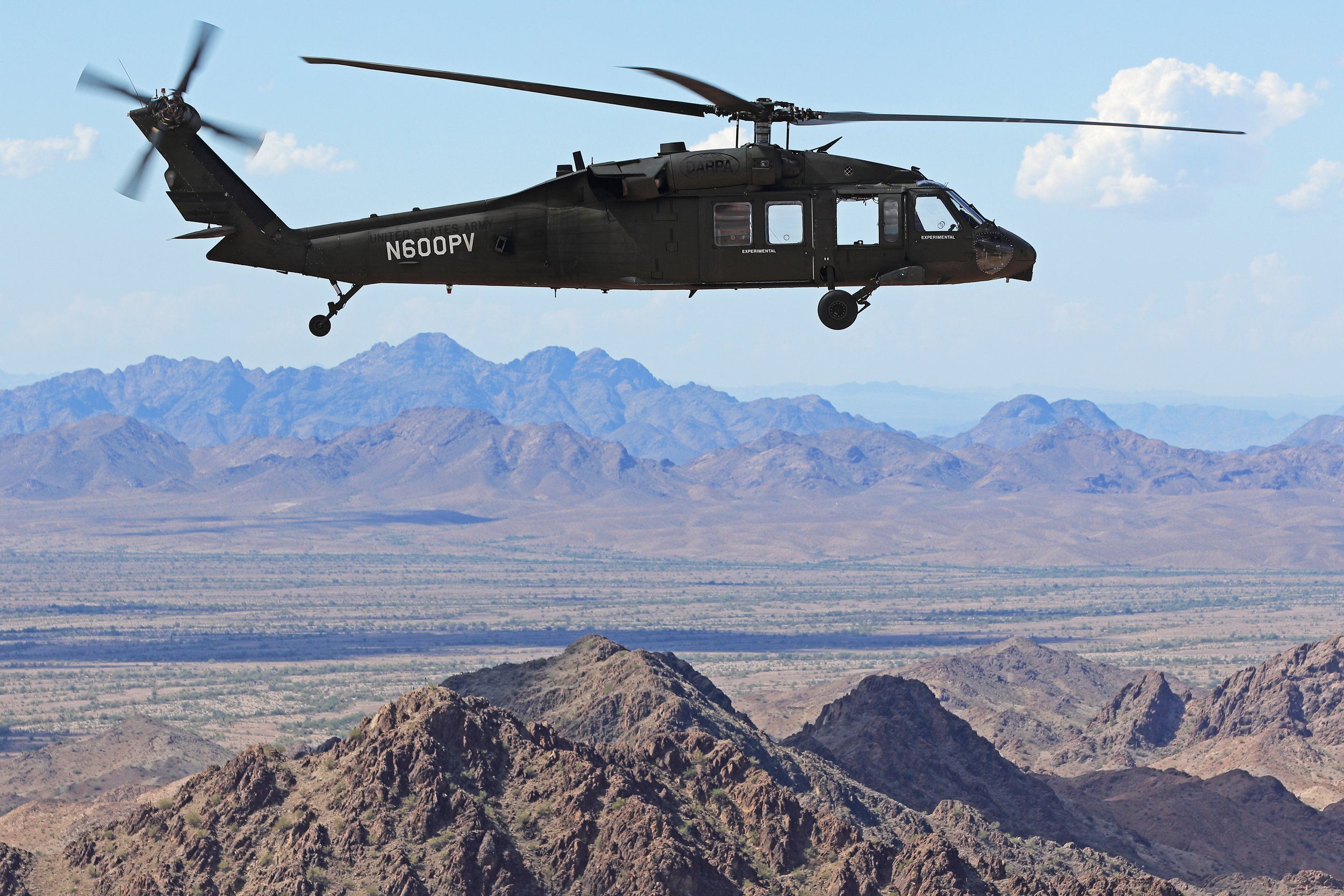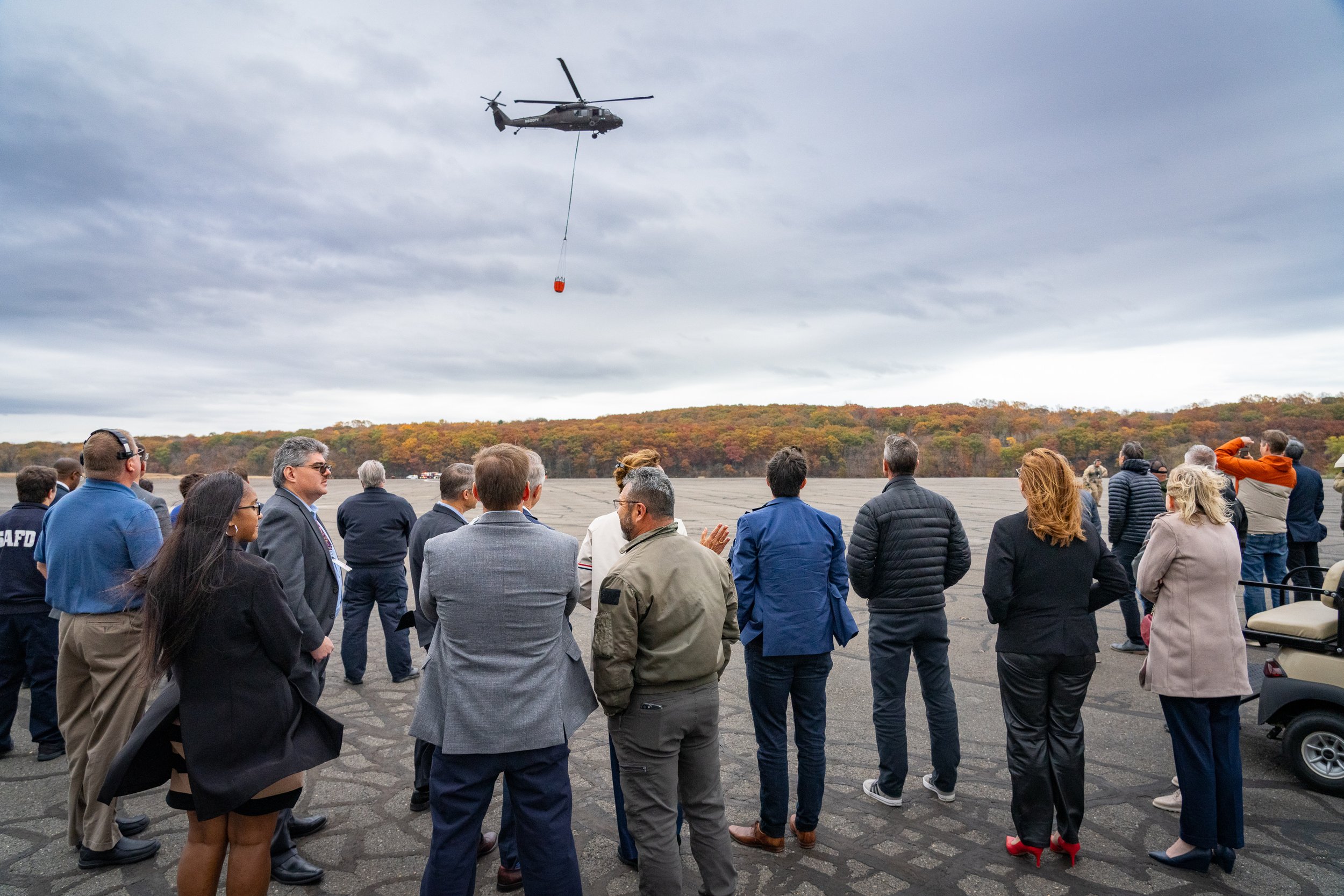Autonomous aircraft for wildfire response
Rain adapts autonomous aircraft with wildfire intelligence to rapidly perceive, understand and manage wildfire ignitions.
This simulation combines fire propagation and fire suppression modeling to determine how many aircraft are required to contain or slow an ignition before it reaches its inflection point.
The number of prepositioned aircraft (black dots) underscores a vitally important point: the long term role of autonomy is scaling wildfire response capacity, not replacing jobs.

Rain’s wildfire mission autonomy software gives fire professionals the ability to assign high-level wildfire mission objectives to autonomous aircraft and exercise supervisory control of the aircraft as it carries out assigned objectives.
Rain integrates with aircraft autonomy systems such as Sikorsky’s MATRIX™.
Wildfire mission autonomy
-

Action early detection
Remotely dispatch prepositioned aircraft to a detected ignition for size up and rapid initial attack.
-

Incorporate automation for repetitive tasks
Automate spot fire or hotspot patrols within a supervisor-defined region, or perform perimeter suppression.
-

Develop suppression plans
Extinguish spot fires or hotspots within a supervisor-defined region. Establish or extend control lines. Automatically calculate the amount of fire suppressant to drop on the fire based on fire spread and intensity.
-

Optional uncrewed modes
Human interface allows operators to provide high-level intent for suppression activity. Air and ground crews are able to understand each other's intent. Pilots receive suggestions on where to fly drop patterns, or the system will route the aircraft to the drop pattern for the pilot.
-

Enhance safety
Detect and avoid terrain, incident assigned aircraft, and other obstacles such as wires, towers, and trees. Incorporate path planning …
-

Manage fire intensity
Provide incident commanders with more options when engaging with natural fire starts. Monitor some lower intensity regions of fire or actively cool to remain within threshold.
What fire agency leaders are saying
“Rain’s autonomous wildfire suppression technology will give every community the opportunity to stop wildfires before they grow out of control.”
“We need much more low intensity, healthy fire and less high intensity, damaging fire. Rain succeeds for both of these goals by making it easier to control damaging fires in new ways, and by helping us advance low intensity fire when and where we need it.”
“Rain is creating a more efficient wildfire response framework that ultimately saves lives, property and our natural ecosystems.”
“Autonomous aircraft—both crewed and uncrewed—can increase flexibility and capacity for on-the-ground incident commanders, ultimately saving lives and property for the communities we serve. Rain is at the forefront of this exciting firefighting evolution.”

Built with Fire Professionals
Our team has worked alongside fire professionals since day one to build a system that works every time. We have personal experience with catastrophic wildfire, and we are solving our own problem.
Updates






